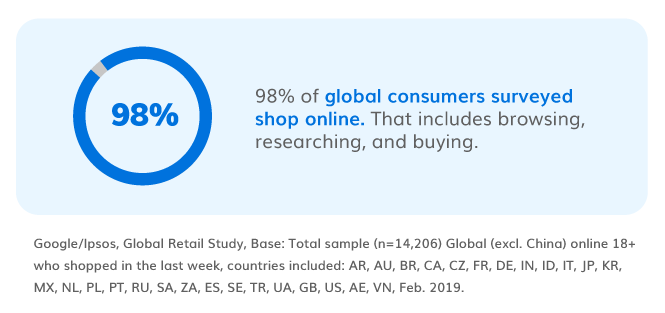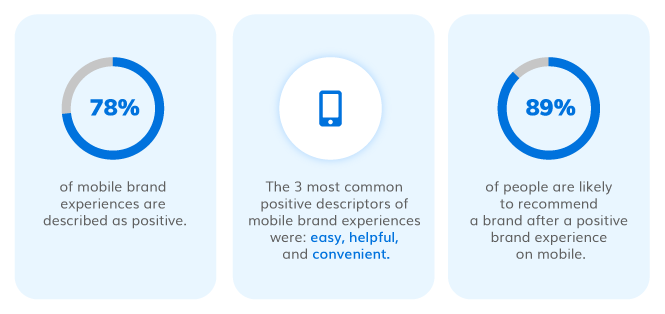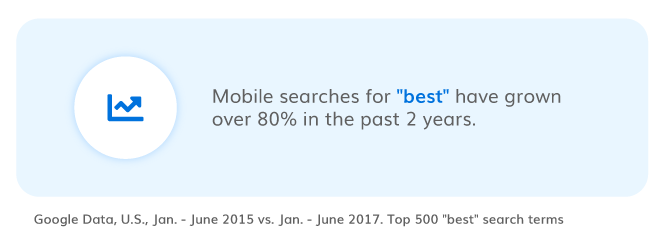[display-name-category]
[post_author]
[wtr-time]
Being in the eCommerce industry can sure be daunting at times. After all, it’s a highly competitive landscape that requires store owners to stay on top of their online shops. Nevertheless, you can scale your SEO eCommerce strategy by following some best practices.
That’s why we decided to create a guide that’ll walk you through the whole process of positioning your site in SERPs.
Why Is SEO Important for eCommerce?
There’s no denying it:
Ecommerce is on the rise as time goes on.
In fact, according to Statista:
eCommerce is expected to make up 24.5% of the total retail sales worldwide.

Source: Statista
Now that’s a lot of potential store owners surely don’t want to miss out on.
Like any other industry type, proper search engine optimization on eCommerce sites boosts ranking in Google and Bing SERPs. With an effective SEO strategy for your online store, more and more potential buyers are likely to find the products they like from your site.
Search engines are a fantastic way for online users to find inspiration on the purchases they’re going to make and research the shops they’re going to buy from.

Source: Think with Google
How Is eCommerce SEO Different from Normal SEO?
Many site owners tend to think that the SEO you’re going to implement to an eCommerce platform is the same as it would be for any other site. While they share their similarities, eCommerce SEO often requires a different strategy.
Because an eCommerce site structure varies significantly from a service-based or lead generation website, there is a different strategy that takes place for optimization.
Online stores often have more pages to represent each of their products. Not only that, but they must also emphasize the users’ shopping and checkout experience, as it’s a lengthy and complex journey that has a significant impact on a person’s purchase decision.
Therefore, if you wish to win the search engine game, you must shift your focus to thinking at a larger scale for your site and optimize it as a whole rather than per page.
Performing SEO eCommerce for Your Site
Since we’ve established how you should approach your search engine optimization for your online store, it’s time to go over the elements that your strategy should include.
Six must-haves for your SEO eCommerce site:
- Focus on a good site architecture.
- Add valuable content for site authority.
- Use transactional keywords for product pages.
- Optimize your site’s page speed.
- Have a crawl budget in mind.
- Expand your online presence to Google Shopping.
Your Site’s Architecture
Truth is:
Organization on an eCommerce website significantly impacts its search engine rankings.
As mentioned earlier, online stores have many more pages than other sites, and as a result may give search engines and users a hard time navigating your store.
Improving your site’s architecture helps simplify its navigation, reduce page load speed, and enhance its mobile experience to directly influence your business results.

Source: Think with Google
Pro tip: A rule of thumb is to ensure that your pages are three clicks or fewer from your home page. That way, you can distribute authority effectively and avoid diluting link equity.
To learn more about some fundamental best practices for your site’s UX and the steps you should follow, we highly encourage you to check out this video:
Valuable Content to Boost Site Authority
Since eCommerce sites are more challenged for attracting links to their product pages, store owners must find other solutions.
Behold blog post content!
Blog posts are a great way to target informational keywords and provide helpful content to potential buyers about your products. Adding high-quality, in-depth content is a fantastic strategy in attracting links and boosting your overall domain authorit for better performance in SERPs.
Nevertheless, valuable content shouldn’t only rely on blog posts.
Creating unique, detailed product descriptions, especially if you’re a retailer, helps your site stand out from other stores that sell the same product.
Pro-tip: Pushing valuable content beyond limits for your SEO eCommerce content strategy, can also take form as:
- FAQ pages
- Product reviews
- Product demo videos
Transactional Keywords On Product Pages
Transactional keywords are part of a robust keyword strategy for your online store.
Although transactional keywords often have lower search traffic, they also have lower competition. Audiences using these keywords when searching online have a “ready-to-buy” mindset and because of high search intent, product pages optimized for these keywords receive more organic traffic and conversions.
Pro-tip: Choose transactional keyword ideas with modifiers such as “affordable” and “best” to head terms.

Source: Think with Google
Once you’ve established the keywords you’ll use for your product pages, be sure to include them in important places key areas such as:
- Title tag
- Headers
- Meta description
- Product description
- Image Alt text
- URL
Bonus: Include your brand in all of these areas to increase brand awareness!
Optimize Page Speed
Website speed is one of Google’s top factors for website rankings and also the culprit to a high bounce rate.
A worthwhile SEO strategy that’ll put your site on the top SERP rankings includes ensuring that your site’s speed is always on point. Some practical ways to improve page speed include:

Furthermore, page speed optimization includes optimizing your product images as well. Luckily, multiple eCommerce websites count on plugins that can help automate this process.
Have a Crawl Budget in Mind?
A site’s crawl budget is the number of pages search engines crawl and index a website during a certain timespan.
Often an overlooked element, staying on top of your crawl budget can certainly help ensure that every page of your site is crawled and indexed correctly. If a page isn’t indexed, it loses not eligibility to rank first.
Naturally, larger websites (such as eCommerce sites) take much more time to crawl than smaller sites.
By regularly updating product pages, using canonical tags, and implementing an adequate internal linking structure, you’ll ensure that Google crawls the essential pages of your site in a fast and efficient manner.
Expand Online Presence to Google Shopping
Last but not least, be sure to take your SEO strategy to the next level by getting your products on the Google Shopping page. You can do so by setting up a Google Merchant Center account.
Fun Fact: Having a Merchant Center account expand your reach by showcasing your store’s product data attached to your Google My Business Knowledge Panel!
Moreover, if your eCommerce site is on Shopify, you can directly integrate it to the Merchant Center and send your product data. You can also use multiple API integrations for a more automated proceeding.
It’s Time to Rank Your eCommerce Site!
With these SEO eCommerce essentials implemented to your site, you can be sure that your online store will dominate SERPs!
Have you considered SEO management services to handle your online store and create a strategy tailored to your business needs? Well, know that you don’t have to drown in your SEO efforts, our team is here to help.






